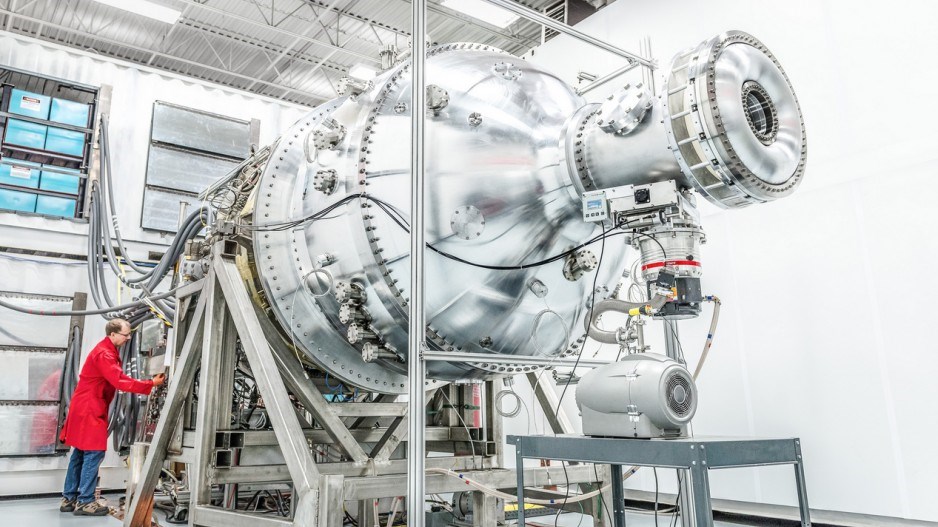Scientists at General Fusion in Burnaby are marking a major milestone in their effort to be the first in the world to generate fusion energy – flipping the switch on what the company says is the world’s largest, most powerful plasma injector.
The new plasma injector, called P13, is ten times more powerful than all the other iterations the company has experimented with, the company said in a news release.
"This is an important milestone for the company, successfully translating the knowledge gained and technology developed from over 150,000 plasma experiments into a machine that is of comparable scale to what is needed for a commercial fusion power plant," General Fusion’s new CEO, Chris Mowry, said in a news release December 21.
General Fusion is one of a handful of projects around the world that are in the race to become the first to produce net energy gain through fusion energy. (Fusion has already been successfully demonstrated, but the amount of energy required to produce it exceeded the energy produced, so the brass ring is a machine that produces more energy than what went in to produce the reaction).
A type of nuclear power, fusion energy is produced when atoms are fused, kicking out neutrons, which then power a reaction that can generate heat. Fusion is what occurs in the sun.
Producing a fusion reaction on Earth first requires turning two elements – deuterium and tritium, which are both heavy hydrogen isotopes – into a plasma.
Plasma is the known as the fourth state of matter (the others being solid, liquid and gas). Plasma is atoms that have been so highly energized that their electrons are freed from their orbits – creating an energized gas.
Creating plasma takes tremendous amounts of power and pressure. The electricity used for the General Fusion plasma injector is stepped up to be delivered in short bursts of up to 35 gigawatts in 100 microseconds, Michael Delage, the company's chief technology officer, explained Delage – about 40 times the output of a large power plant.
General Fusion’s approach to fusion energy is to contain plasma in a spherical chamber with a magnetic field, and then compress it to ignite a fusion reaction.
There are various approaches to the compression, including lasers. General Fusion’s approach is shockwaves.
Once the plasma has been created and injected into a spherical reaction chamber and contained, an array of pneumatic pistons arranged outside the sphere would be fired, sending a shockwave that would compress the plasma, fuse nuclei, and start a reaction that ultimately would generate heat to drive turbines that would produce electricity.
"Our PI3 test program takes the record-breaking performance achieved on our smaller plasma injectors and scales it up to a size and power similar to that which we'll be deploying as part of our fusion demonstration plant," Delage said.
"General Fusion's plasma injector technology will deliver plasma fuel into a compression chamber where it can be rapidly heated to ignition conditions, releasing energy. This is analogous to a diesel engine, but in our case, the hydrogen fuel coming out of the injector is 5 million degrees Celsius and will be heated by compression to 150 million degrees Celsius, the temperature required for plasma to burn in a fusion reaction."
In the coming months, General Fusion will be “fine-tuning” the plasma injector. Delage said actual production of fusion power is still a few years away.
Two of the fuel sources for fusion is deuterium (heavy water) and lithium, both of which are abundant.
Unlike fission power, which uses highly radioactive uranium and produces long-lived radioactive waste, the radioactive residuals of fusion power would be short-lived, and there is no risk of runaway meltdowns.
General Fusion has attracted more than $100 million in private investment from venture capitalists alike Jeff Bezos and B.C. clean-tech venture capital firm Chrysalix.




